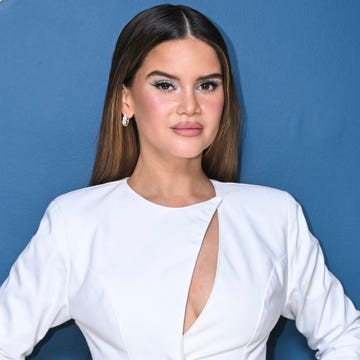Here’s what you’ll learn when you read this article:
- San Francisco artist Gilbert Baker created the rainbow pride flag in the late 1970s.
- His original design had eight colorful stripes, with each color carrying a different meaning.
- The rainbow flag replaced an earlier LGBTQ pride symbol and has inspired additional pride flags.
The rainbow pride flag has been a universal symbol of LGBTQ pride and diversity for more than three decades, but it wasn’t always a vibrant emblem of the community. For years, the gay liberation movement touted a pink triangle, reclaiming the symbol initially used by the Nazis to identify LGBTQ prisoners in death camps. But that all changed thanks to artist Gilbert Baker.
In 1970, a young Baker was drafted into the Army and stationed in San Francisco, where he chose to remain after being honorably discharged two years later. With dreams of pursuing a career as an artist, Baker soon began performing in drag shows and learned to sew his own costumes. He also got involved in San Francisco’s thriving activist community through which he met politician Harvey Milk, who became one of the first openly gay elected official in 1977 as a member of San Francisco’s Board of Supervisors.
After his election, Milk asked Baker to design a symbol of hope and pride for the LGBTQ community. In 1978, Baker set to work on a rainbow flag comprised of eight colorful stripes, with each color representing a specific meaning: hot pink for sexuality, red for life, orange for healing, yellow for sun, green for nature, turquoise for art, indigo for harmony, and violet for human spirit.
“We needed something that expressed us. The rainbow really fits that, in terms of: we’re all the colors, and all the genders and all the races,” he later told Time magazine in 2015. “It’s a natural flag; the rainbow is in the sky, and it’s beautiful. It’s a magical part of nature.”
With some assistance from 30 volunteers, including activists Lynn Segerblom and James McNamara, Baker hand-dyed strips of fabric in metal trash cans filled with natural dyes in the attic of the Gay Community Center in San Francisco. He then used his sewing machine to sew the first two flags, which were first displayed in the San Francisco Gay Freedom Day Parade on June 25, 1978.
Following Milk’s tragic assassination that November, public demand for the rainbow flag dramatically increased, and Baker approached Paramount Flag Company to mass produce it. Due to cost and fabric limitations, the colors pink and indigo were eliminated from the flag and turquoise was changed to regular blue, resulting in the modern six-stripe rainbow flag. Paramount helped bring international attention the flag, and its six colors eventually came to symbolize the diversity within the LGBTQ community.
Still, the rainbow flag didn’t officially become widely recognized and accepted as a symbol of LGBTQ pride until 1994. In commemoration of the 25th anniversary of the Stonewall riots that June, Baker was commissioned to create a mile-long version of the flag for Stonewall 25, New York City’s landmark Pride protest and celebration spanning two days. The historic flag, which took 10,000 people to carry, led the International March on the United Nations to Affirm the Human Rights of Lesbian and Gay People. Guinness World Records recognized it as the world’s largest flag at the time.
Baker later surpassed this record when he created an even longer flag, measuring one and a quarter miles, to celebrate the 25th anniversary of the creation of his rainbow flag. In June 2003, thousands of volunteers carried the rainbow banner down the entire length of Duval Street in Key West, Florida. It was long enough that it stretched from sea to sea, the Gulf of Mexico on one side and the Atlantic Ocean on the other. To pay homage to the original rainbow flag, it featured the initial eight-color design.
Both giant flags were cut into several sections, with the latter distributed to Pride organizations in more than 100 cities worldwide.
Baker died in March 2017 at age 65, but his legacy lives on. His iconic flag has inspired new designs, like the Progress Pride Flag created by nonbinary artist Daniel Quasar in 2018. Quasar’s flag includes Baker’s six-striped rainbow along with an arrow-shaped design on the left side, featuring stripes of white, pink, and blue to represent the trans community, as well as brown and black stripes to represent LGBTQ people of color. Baker’s work has also given way to Pride flags that represent specific identities within the community, like the three-color trans and bisexual flags.
“What the rainbow has given our people is a thing that connects us. I can go to another country, and if I see a rainbow flag, I feel like that’s someone who is a kindred spirit or [that it’s] a safe place to go. It’s sort of a language, and it’s also proclaiming power,” Baker said in 2015. “I hoped it would be a great symbol, but it has transcended all of that—and within short order—because it became so much bigger than me.”
Catherine Caruso joined the Biography.com staff in August 2024, having previously worked as a freelance journalist for several years. She is a graduate of Syracuse University, where she studied English literature. When she’s not working on a new story, you can find her reading, hitting the gym, or watching too much TV.
















